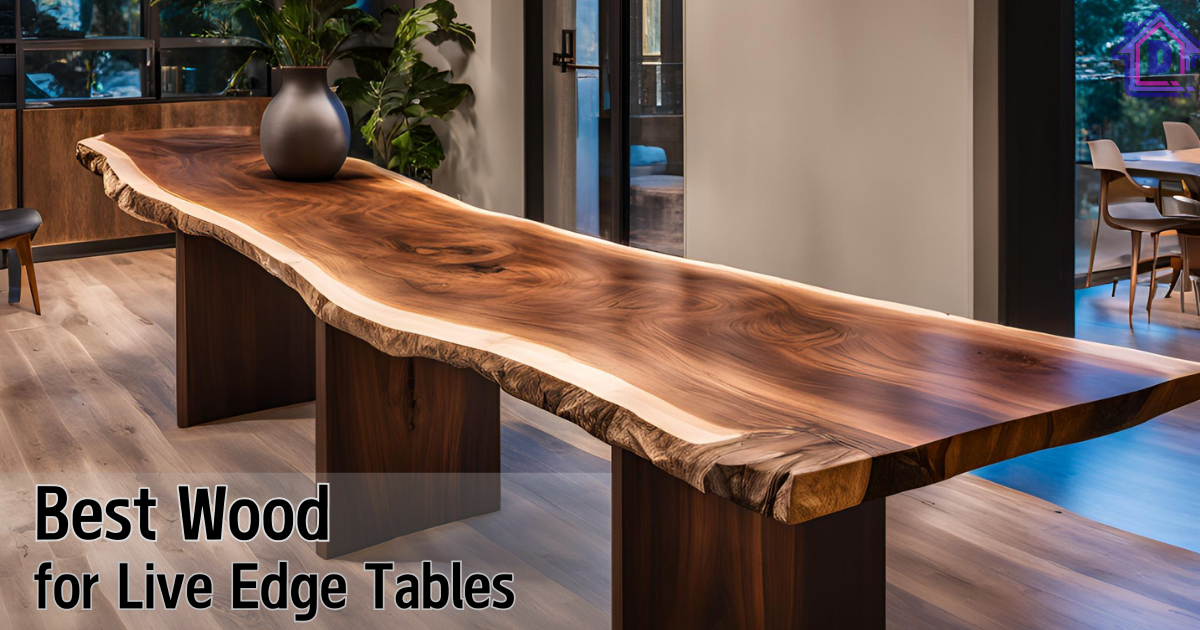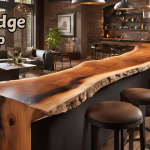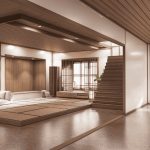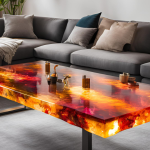Live edge tables are a stunning addition to any home, bringing a touch of nature indoors. They showcase the beauty of the wood while maintaining the original shape of the tree. However, choosing the best wood for live edge tables is crucial for durability and aesthetic appeal. In this article, we’ll explore various types of wood, and their characteristics, and help you decide on the best wood for live edge dining tables, countertops, and more.
What Is a Live Edge Table?
A live edge table retains the natural edge of the wood slab, often highlighting its unique grain, knots, and imperfections. This design choice adds character and warmth to your space. The table can serve multiple purposes, from dining to working, making it a versatile piece of furniture.
Factors to Consider When Choosing the Best Wood for Live Edge Tables.
When selecting wood for live edge tables, consider the following factors:
- Durability: The wood should withstand daily use.
- Grain Pattern: Look for visually appealing patterns.
- Finish: Some woods take stains and finish better than others.
- Weight: Heavier wood can be more stable but harder to move.
Here’s a simple table chart for the best wood types for live edge tables, listing each type’s key features and ideal usage:
| Wood Type | Color & Appearance | Durability | Grain Pattern | Best For | Special Qualities |
| Walnut | Rich, dark brown with occasional lighter streaks | High durability | Smooth, straight to wavy grain | High-end tables, modern decor | Develops a beautiful patina over time |
| Maple | Light cream to reddish-brown | Very durable | Smooth and subtle, often with curly or birdseye variations | Sleek, modern designs, minimalist decor | Great for adding a light, clean finish |
| Cherry | Reddish-brown that darkens with age | Moderate durability | Straight, fine grain with occasional knots | Rustic or traditional tables | Ages to a deep, rich color over time |
| Oak | Light to medium brown with warm tones | Highly durable | Prominent, coarse grain pattern | Rustic and farmhouse styles, high-traffic tables | Known for its strength and resistance to wear |
| Cedar | Reddish with natural color variations | Moderate durability | Straight grain with a fine texture | Small tables, outdoor furniture | Naturally aromatic and resistant to pests |
| Elm | Light to medium brown with interlocking grain | Very durable | Unique, interlocking grain that adds character | Unique statement pieces | Resilient, flexible, and visually striking |
Best Wood for Live Edge Tables
Here are some of the best wood types for live edge tables:
1. Walnut
Walnut is often regarded as one of the top choices for live edge tables. It boasts a rich, dark color and intricate grain patterns. Here are some reasons to choose walnut:
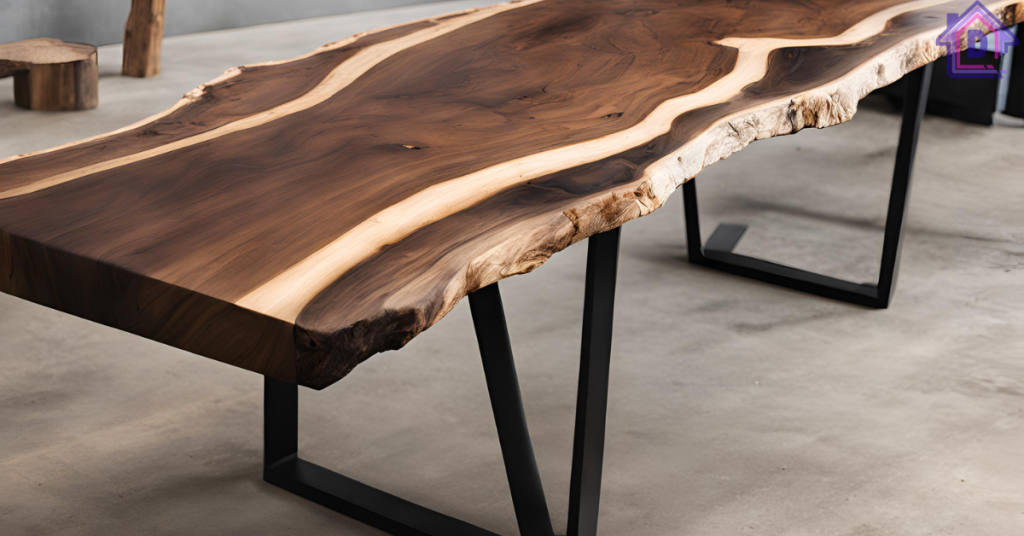
- Durability: Walnut is a hardwood that withstands wear and tear.
- Aesthetic Appeal: The unique color variations and grain patterns add elegance to any room.
- Versatility: Walnut can blend with various décor styles.
2. Maple
Maple is another excellent option for live edge tables.It is renowned for having fine grain and a bright colour.. Key features include:
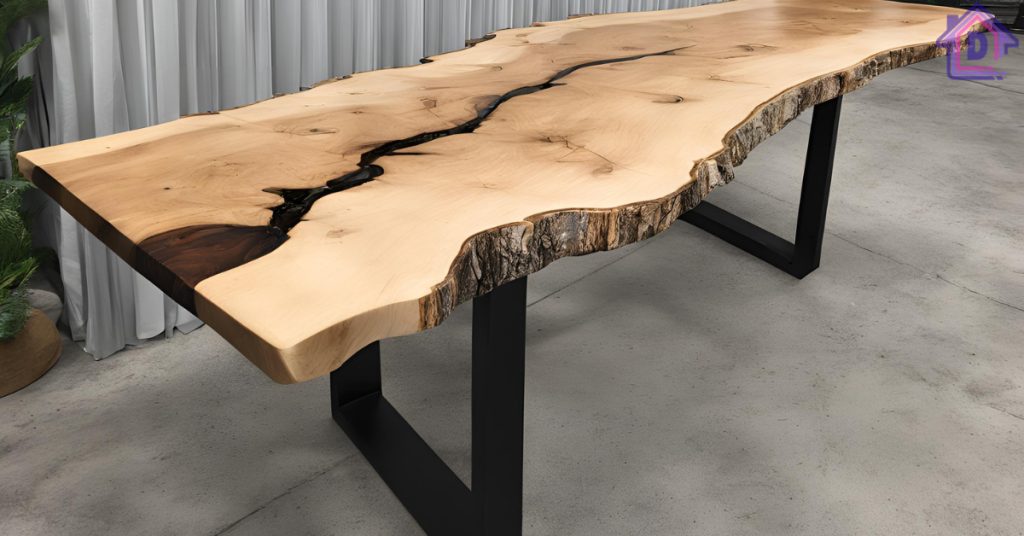
- Strength: Maple is exceptionally hard and resistant to damage.
- Simplicity: Its light color allows for easy customization with stains and finishes.
- Availability: Maple is widely available, making it a popular choice.
3. Oak
Oak is a classic choice for furniture and works well for live edge tables. This wood is known for its strength and attractive grain. Benefits include:
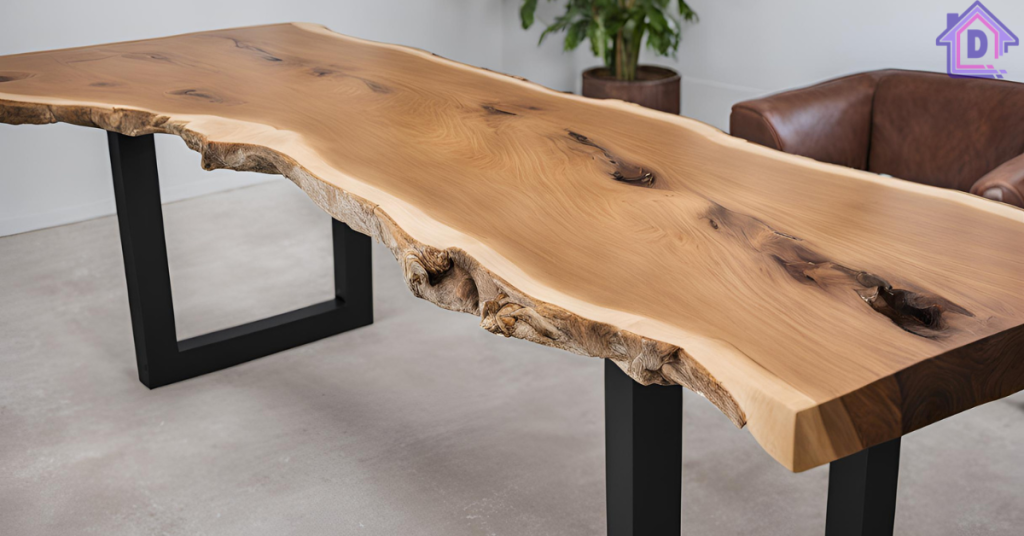
- Durability: Oak is very sturdy, making it suitable for high-traffic areas.
- Style: Its pronounced grain adds texture to the table.
- Cost-Effective: Oak is often more affordable than other hardwoods.
4. Cherry
Cherry wood is famous for its warm color and smooth texture. Over time, cherry develops a rich patina, making it even more appealing. Here’s why you might consider cherry:
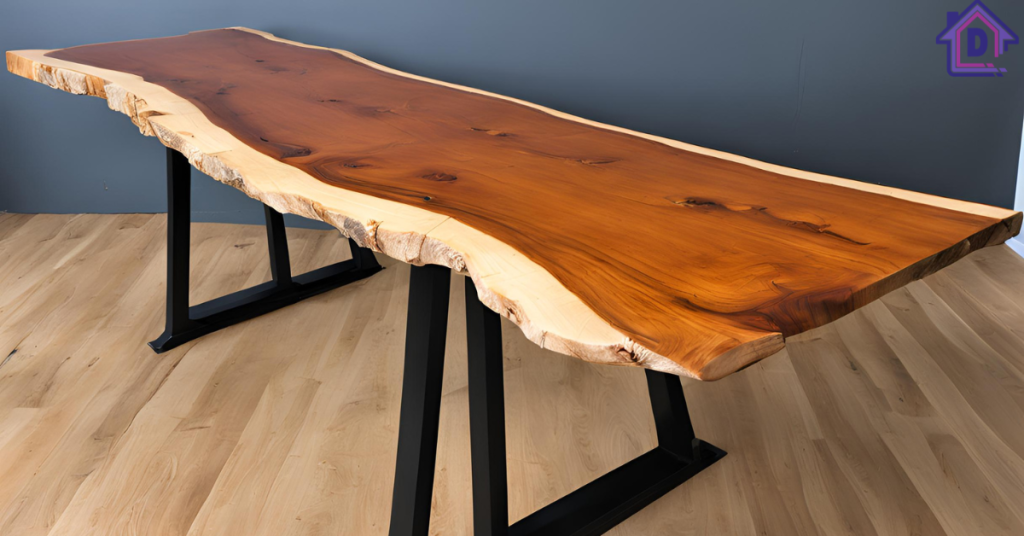
- Beauty: Cherry wood has a beautiful reddish hue that deepens with age.
- Workability: It’s easy to work with, making it suitable for intricate designs.
- Sustainability: Cherry is often sourced from managed forests.
5. Ash
Ash is a lighter wood that offers a unique look for live edge tables. It is characterized by its straight grain and flexibility. Reasons to choose ash include:
- Flexibility: Ash can bend without breaking, making it great for creative designs.
- Lightweight: Compared to heavier alternatives, this wood is simpler to handle.
- Cost-Effective: Ash is often more affordable than other hardwoods.
Which Tree Makes the Best Live Edge Table?
Many types of trees can provide excellent live edge slabs. Some of the best options include:
- Black Walnut: Known for its rich colours and patterns.
- Maple: Offers a smooth surface and beautiful grain.
- Elm: Features a unique, wavy grain pattern.
- Cedar: Lightweight and aromatic, perfect for rustic styles.
Choosing the right tree is crucial, as each type of wood offers unique properties.
Best Wood for Live Edge Countertops
If you’re considering live edge countertops, butcher block styles made from maple or walnut are fantastic options. These woods are durable and can handle daily use, making them ideal for kitchens. Additionally, teak is a great choice due to its water-resistant properties, making it suitable for areas near sinks.
Tips for Maintaining Live Edge Tables
To keep your live edge table looking its best, follow these maintenance tips:
- Clean Regularly: Use a damp cloth to wipe down the surface.
- Steer clear of harsh chemicals: Since they may harm the wood’s finish.
- Reapply Finish: Depending on usage, consider reapplying oil or varnish annually.
- Use Coasters: Protect the surface from heat and moisture.
Conclusion
Choosing the best wood for live edge tables is essential for creating a stunning and functional piece of furniture. With options like walnut, maple, and oak, you have a range of choices to suit your style and needs. Whether you’re looking for a live edge dining table or a unique countertop, the right wood can elevate your space. Remember to consider the characteristics of each type of wood and follow maintenance tips to keep your table looking beautiful for years to come.
